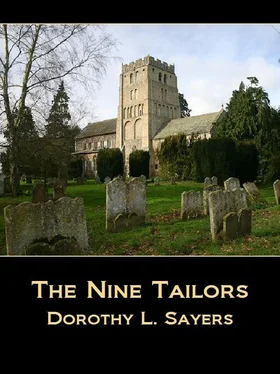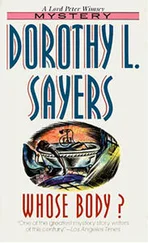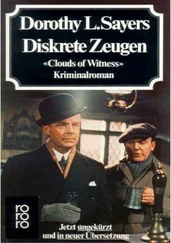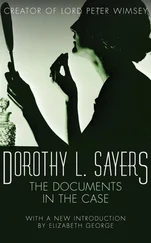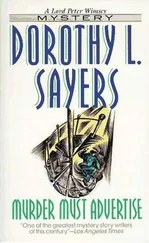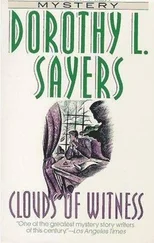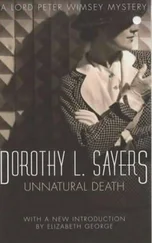Dorothy Sayers - The Nine Tailors
Здесь есть возможность читать онлайн «Dorothy Sayers - The Nine Tailors» весь текст электронной книги совершенно бесплатно (целиком полную версию без сокращений). В некоторых случаях можно слушать аудио, скачать через торрент в формате fb2 и присутствует краткое содержание. Жанр: Классический детектив, на английском языке. Описание произведения, (предисловие) а так же отзывы посетителей доступны на портале библиотеки ЛибКат.
- Название:The Nine Tailors
- Автор:
- Жанр:
- Год:неизвестен
- ISBN:нет данных
- Рейтинг книги:3 / 5. Голосов: 1
-
Избранное:Добавить в избранное
- Отзывы:
-
Ваша оценка:
- 60
- 1
- 2
- 3
- 4
- 5
The Nine Tailors: краткое содержание, описание и аннотация
Предлагаем к чтению аннотацию, описание, краткое содержание или предисловие (зависит от того, что написал сам автор книги «The Nine Tailors»). Если вы не нашли необходимую информацию о книге — напишите в комментариях, мы постараемся отыскать её.
The Nine Tailors — читать онлайн бесплатно полную книгу (весь текст) целиком
Ниже представлен текст книги, разбитый по страницам. Система сохранения места последней прочитанной страницы, позволяет с удобством читать онлайн бесплатно книгу «The Nine Tailors», без необходимости каждый раз заново искать на чём Вы остановились. Поставьте закладку, и сможете в любой момент перейти на страницу, на которой закончили чтение.
Интервал:
Закладка:
The parish church of Fenchurch St. Paul, like a good many others in that part of the country, stands completely isolated from the village itself, with only the Rectory to neighbour it. The village itself is grouped about a crossroads, one arm of which runs southward to Fenchurch St. Stephen and northwards to join the Fenchurch St. Peter road a little south of the Thirty-foot; while the other, branching off from the same road by the church, degenerates at the western end of the village into a muddy drove by which, if you are not particular about your footing, you may, if you like, emerge once more on to the road by the Thirty-foot at Frog’s Bridge. The three Fenchurches thus form a triangle, with St. Paul to the north, St. Peter to the south, and St. Stephen to the west. The L.N.E.R. line connects St. Peter with St. Stephen, passing north to cross the Thirty-foot at Dykesey Viaduct on its way to Leamholt.
Of the three, Fenchurch St. Peter is the largest and most important, possessing in addition to a railway-station, a river with two bridges. It has, however, but a bare and uninteresting church, built in the latest and worst period of Perpendicular, with a slate spire and no bells to speak of. Fenchurch St. Stephen has a railway-station — though only as it were, by accident, through lying more or less upon the direct line between Leamholt and St. Peter. Still, there the station is; moreover, there is a church with a respectable fourteenth-century tower, a rather remarkable rood-screen, a Norman apse and a ring of eight bells. Fenchurch St. Paul is the smallest village, and has neither river nor railway; it is, however, the oldest; its church is by far the largest and the noblest, and its bells beyond question the finest. This is due to the fact that St. Paul is the original abbey foundation. The remains of the first Norman church and a few stones which mark the site of the old cloisters may still be seen to east and south of the existing chancel. The church itself, with the surrounding glebe, stands on a little mound rising some ten or twelve feet above the level of the village — an elevation which, for the Fens, is considerable and, in ancient times, was sufficient to save church and abbey from inundation during the winter months. As for the river Wale, Fenchurch St. Peter has no right to boast about that, for did not the old course of the Wale run close by St. Paul’s church, until the cutting of Potter’s Lode in King James I’s time drained away its waters by providing them with a shorter and more direct channel? Standing on the roof of the tower at Fenchurch St. Paul, you can still trace the old river bed, as it wanders circuitously across meadow and ploughland, and see where the straight green dyke of Potter’s Lode spans it like a string to a bow. Outside the group of the Fenchurches, the land rises slightly all round, being drained by cross-dyking into the Wale.
Lord Peter Wimsey, having seen the front axle of the Daimler taken down and decided that Mr. Brownlow and Mr. Wilderspin could probably fix it up between them, dispatched his message from the post-office, sent a wire to the friends who were expecting him at Walbeach, and then cast about him for some occupation. The village presented nothing of interest, so he determined to go and have a look at the church. The tolling of the bell had ceased and Hezekiah had gone home; the south door was, however, open, and entering, he discovered Mrs. Venables putting fresh water in the altar vases. Catching sight of him as he stood gazing at the exquisite oak tracery of the screen, she came forward to greet him.
“It is beautiful, isn’t it? Theodore is so proud of his church. And he’s done a lot, since we’ve been here, to keep it looking nice. Fortunately the man before us was conscientious and did his repairs properly, but he was very Low and allowed all manner of things that quite shocked us. This beautiful chapel, for instance, would you believe that he allowed it to be used for furnace-coke? Of course, we had all that cleared out. Theodore would like a lady-altar here, but we’re afraid the parishioners would think it popish. Yes — it’s a magnificent window, isn’t it? Later than the rest, of course, but so fortunate that it’s kept its old glass. We were so afraid when the Zeppelins came over. You know, they dropped a bomb at Walbeach, only twenty miles off, and it might just as easily have been here. Isn’t the parclose lovely? Like lace, I always think. The tombs belong to the Gaudy family. They lived here up to Queen Elizabeth’s time, but they’ve all died out now. You’ll find the name on the Treble bell: GAUDE, GAUDY, DOMINI IN LAUDE. There used to be a chantry on the north side, corresponding to this: Abbot Thomas’ chantry, it was, and that’s his tomb. Batty Thomas is named after him — a corruption of ‘Abbot,’ of course. Some vandal in the nineteenth century tore down the screen behind the choir stalls to put the organ in. It’s a hideous thing, isn’t it? We put in a new set of pipes a few years ago, and now the bellows want enlarging. Poor Potty has his work cut out to keep the wind-chest filled when Miss Snoot is using the full organ. They all call him Potty Peake, but he’s not really potty, only a little lacking, you know. Of course, the angel roof is our great show-piece — I think myself it’s even lovelier than the ones at March or Needham Market, because it has all the original colouring. At least, we had it touched up here and there about twelve years back, but we didn’t add anything. It took ten years to persuade the churchwardens that we could put a little fresh gold-leaf on the angels without going straight over to Rome, but they’re proud of it now. We hope to do the chancel roof too, one day. All these ribs ought to be painted, you can still see traces of colour, and the bosses ought to be gilt. The east window is Theodore’s bête noire. That dreadful crude glass — about 1840, I think it is. Quite the worst period, Theodore says. The glass in the nave has all gone, of course — Cromwell’s men. Thank goodness they left part of the clerestory. I suppose it was rather a job to get up there. The pews are modern; Theodore got them done ten years ago. He’d have preferred chairs, but the congregation wouldn’t have liked it, being used to pews, and he had them copied from a nice old design that wasn’t too offensive. The old ones were terrible — like bathrooms — and there was a frightful gallery along both sides, blocking the aisle windows completely and ruining the look of the pillars. We had that taken down at the same time. It wasn’t needed, and the school-children would drop hymn-books and things on people’s heads. Now, the choir-stalls are different. They are the original monks’ stalls, with misereres. Isn’t the carving fine? There’s a piscina in the sanctuary, but not a very exciting one.”
Wimsey admitted that he was unable to feel great excitement about piscinas.
“And the altar-rails are very poor, of course — Victorian horrors. We want very much to put up something better in their place when we can find the money. I’m sorry I haven’t the key to the tower. You’d like to go up. It’s a wonderful view, though it’s all ladders above the ringing-chamber. It makes my head swim, especially going over the bells. I think bells are rather frightening, somehow. Oh, the font! You must look at the font. That carving is supposed to be quite remarkable. I forget exactly what it is that’s so special about it — stupid of me. Theodore must show you, but he’s been sent for in a hurry to take a sick woman off to hospital, right away on the other side of the Thirty-foot, across Thorpe’s Bridge. He rushed off almost before he’d finished his breakfast.”
(“And they say,” thought Wimsey, “that Church of England parsons do nothing for their money.”)
Читать дальшеИнтервал:
Закладка:
Похожие книги на «The Nine Tailors»
Представляем Вашему вниманию похожие книги на «The Nine Tailors» списком для выбора. Мы отобрали схожую по названию и смыслу литературу в надежде предоставить читателям больше вариантов отыскать новые, интересные, ещё непрочитанные произведения.
Обсуждение, отзывы о книге «The Nine Tailors» и просто собственные мнения читателей. Оставьте ваши комментарии, напишите, что Вы думаете о произведении, его смысле или главных героях. Укажите что конкретно понравилось, а что нет, и почему Вы так считаете.
